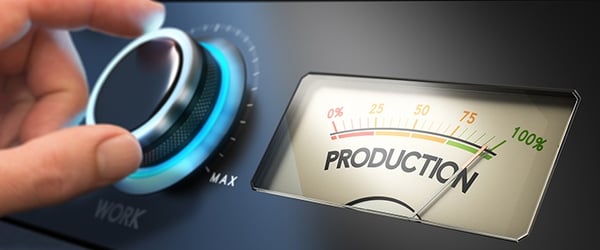Don’t Let The Purchase Of New Equipment Drag You Into A Sinkhole
Zachary Smith March 9, 2016
A common misstep among less-seasoned manufacturers is overleveraging themselves on new equipment in the well-intentioned effort to increase capacity. As veteran shop owners know, investing in new equipment can actually be a risky move and be a hindrance to your goals if administered incorrectly.

Over the years, we’ve heard from thousands of suppliers about what they've seen when it comes to decisions that have put shops on a rocky path. Not understanding when to purchase equipment has come up a number of times. And when talking about equipment in the scope of increasing capacity, it’s important to note the difference between immediate and future capacity needs.
The two situations should be compared — let's discuss why.
Immediate Capacity
Great. You need to increase your capacity right now. This could be because you just landed a new client that has an untypical set of specifications you need to follow. Or perhaps an existing client is deciding to transfer more work to your job shop, and who wants to turn down more business? But it looks like this work is out of the scope of capabilities your current equipment can perform. So I guess you should start sourcing some new machines.
But then again, maybe that’s not the best course of action. Immediate client needs can put pressure on you to make decisions that you would often give more thought to. New equipment can become a sinkhole for your finances if a strategy for future work is not set in place. If future work for new equipment is undetermined, then that might be all the reason you need to hold off buying.
"But I still need the equipment to fulfill the contract,” you say. Have you considered leasing? Sometimes leasing is viewed as a hassle, but it’s a better alternative than outsourcing the work and is certainly much more flexible than buying the machine outright in these sorts of situations. You won’t have to scramble to find work to make the purchase profitable, especially if you only need to fulfill an immediate need. Whether over the course of a month or two years, once the work is done, so is the lease on your machine. And hey, if you end up finding more work for the equipment during the course of its lease, feel free to look into purchasing it.
Future Capacity
Work is slow. You haven’t increased profits in some time, and you’ve all but tapped out your current client base and their industries. It’s time to look elsewhere. But bidding on new work is hard. First you have to find work you are qualified for and then you have to adjust your entire workflow to accommodate the new business. Some of these adjustments may mean acquiring new equipment. Depending on the machinery needed, you may be diving into a huge investment anchored at the bottom of uncertain waters.
So what do you do? Anticipated client needs are easier to account for, and as long as you aren’t floundering for business, easier to plan new purchases around. For instance, if you are looking to break into a new business that could require new equipment, and these are the things to consider.
- Can your current labor force learn and operate the new machine(s)?
- Do you have to change the shop floor to maximize new workflows?
- Do you have to buy a new machine, or would a used one do the trick?
- If you buy new equipment, will you find enough work to make it worthwhile?
- Is it feasible with your current budget to make a purchase?
- And most importantly, will this machine solve the problem on hand, or are you grasping at straws?
You know what the right answers to those questions are. Use them during your decision process. All we’re trying to press is that making new equipment purchases is not something to be taken lightly. The situation differs from every shop owner, but we’ve seen the wrong purchase render companies bankrupt. So do yourself a favor. Do your research on the industry, the equipment, and your own job shop. Make the best choice for your business and enjoy the benefits.
Did you find this useful?









